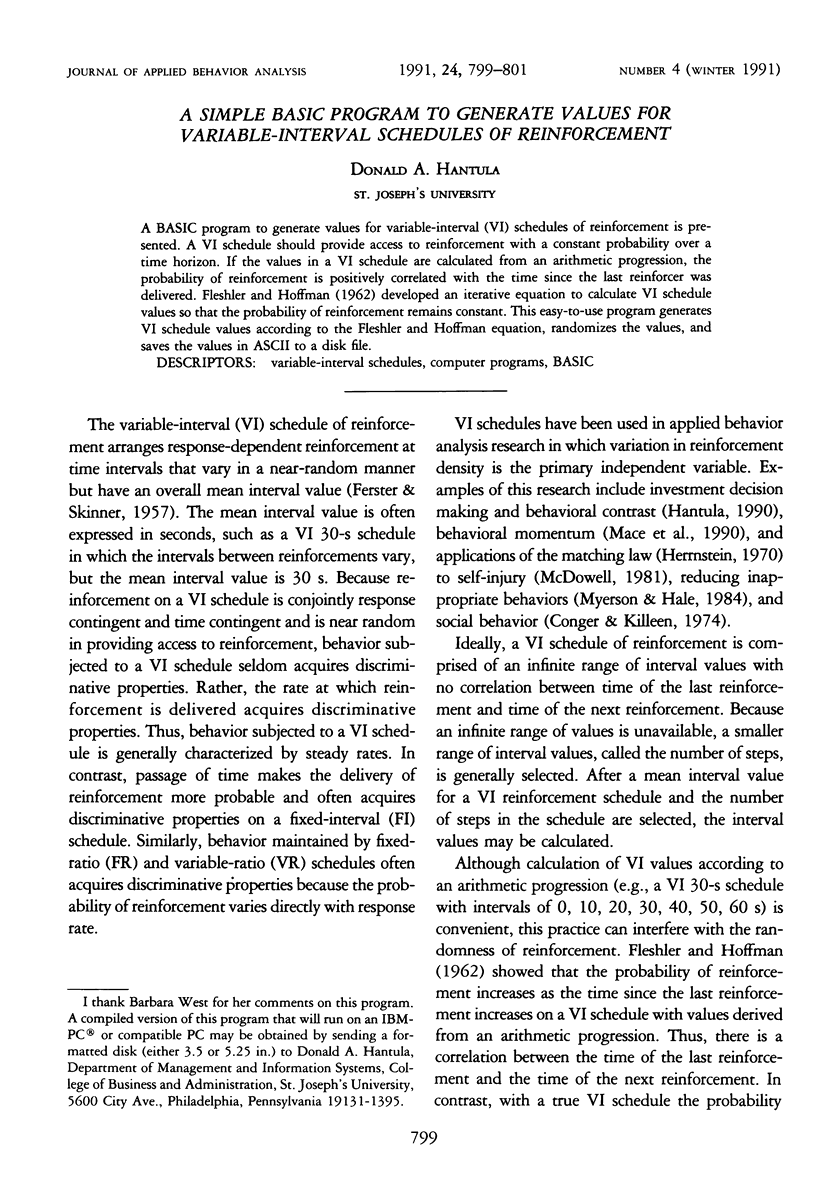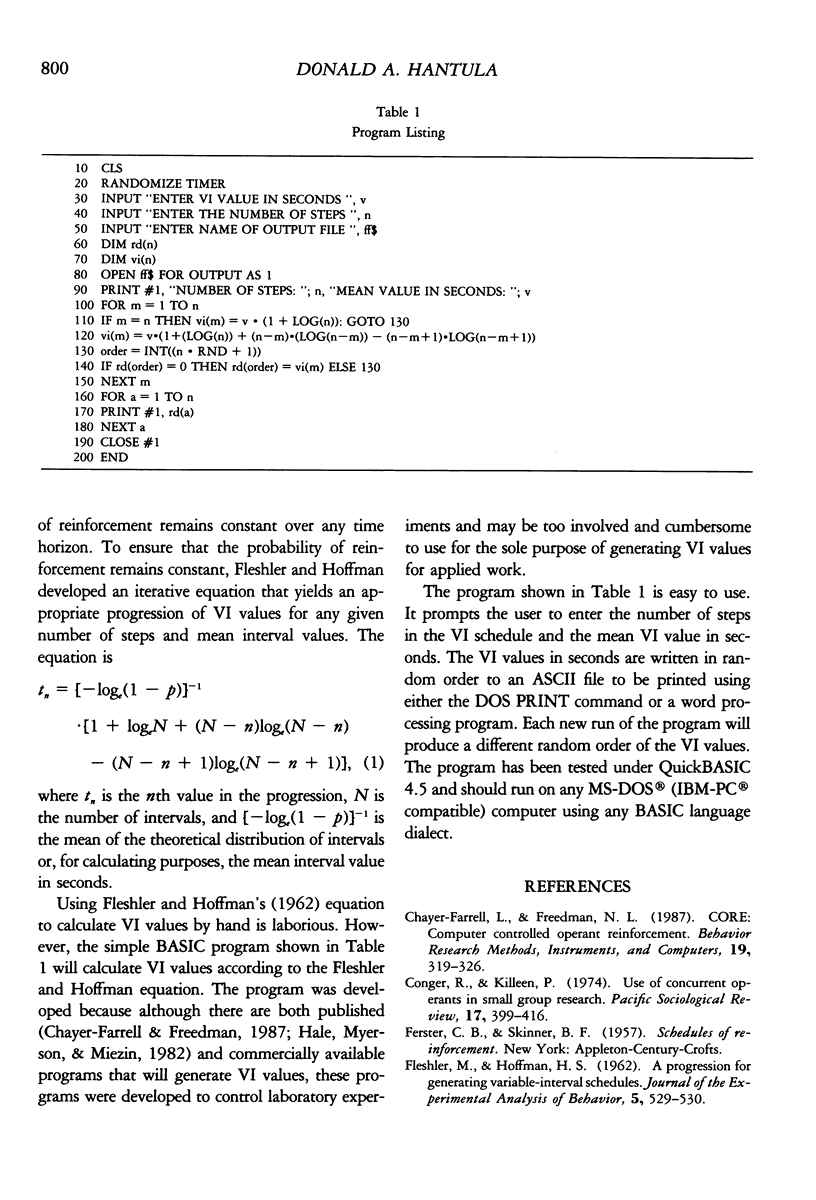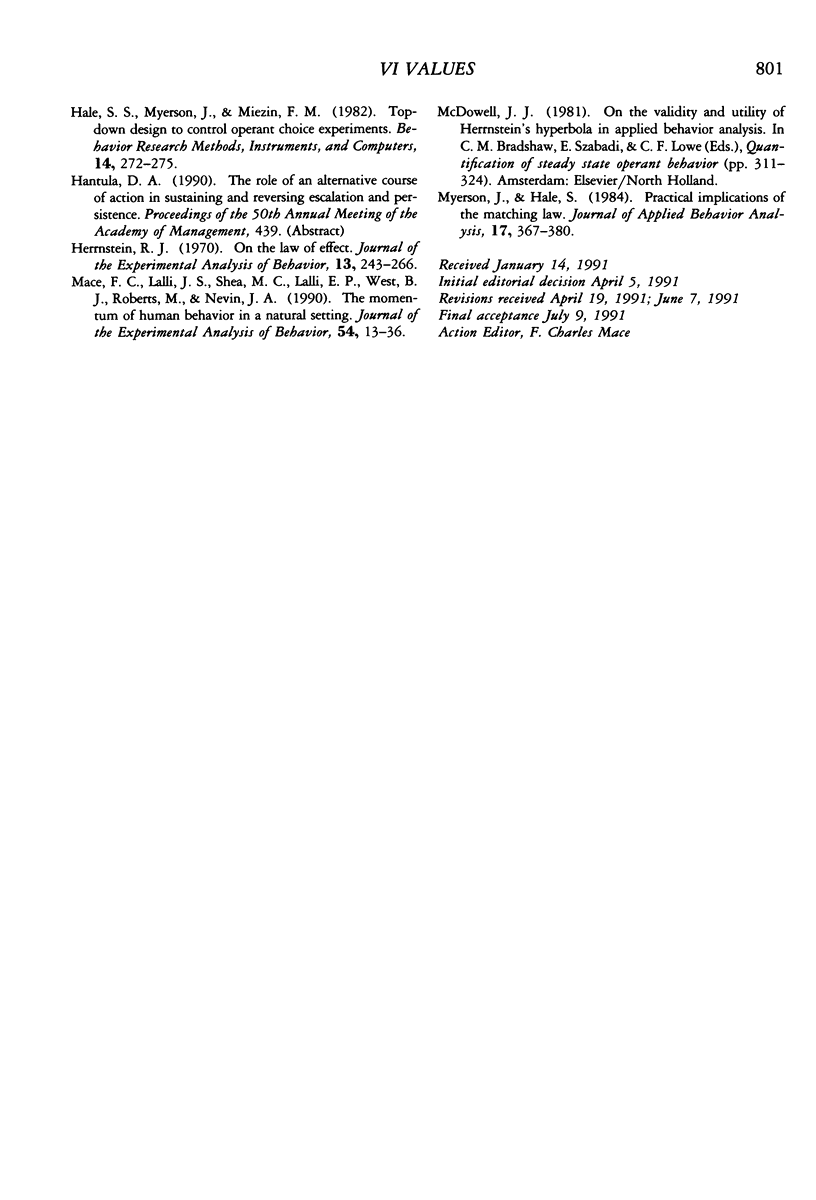Abstract
A BASIC program to generate values for variable-interval (VI) schedules of reinforcement is presented. A VI schedule should provide access to reinforcement with a constant probability over a time horizon. If the values in a VI schedule are calculated from an arithmetic progression, the probability of reinforcement is positively correlated with the time since the last reinforcer was delivered. Fleshler and Hoffman (1962) developed an iterative equation to calculate VI schedule values so that the probability of reinforcement remains constant. This easy-to-use program generates VI schedule values according to the Fleshler and Hoffman equation, randomizes the values, and saves the values in ASCII to a disk file.
Keywords: variable-interval schedules, computer programs, BASIC
Full text
PDF


Selected References
These references are in PubMed. This may not be the complete list of references from this article.
- FLESHLER M., HOFFMAN H. S. A progression for generating variable-interval schedules. J Exp Anal Behav. 1962 Oct;5:529–530. doi: 10.1901/jeab.1962.5-529. [DOI] [PMC free article] [PubMed] [Google Scholar]
- Hall G. A., Lattal K. A. Variable-interval schedule performance in open and closed economies. J Exp Anal Behav. 1990 Jul;54(1):13–22. doi: 10.1901/jeab.1990.54-13. [DOI] [PMC free article] [PubMed] [Google Scholar]
- Herrnstein R. J. On the law of effect. J Exp Anal Behav. 1970 Mar;13(2):243–266. doi: 10.1901/jeab.1970.13-243. [DOI] [PMC free article] [PubMed] [Google Scholar]
- Myerson J., Hale S. Practical implications of the matching law. J Appl Behav Anal. 1984 Fall;17(3):367–380. doi: 10.1901/jaba.1984.17-367. [DOI] [PMC free article] [PubMed] [Google Scholar]


